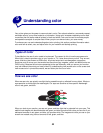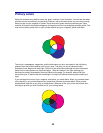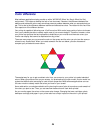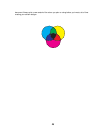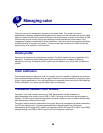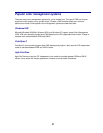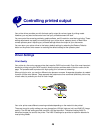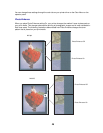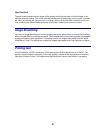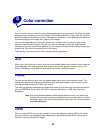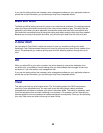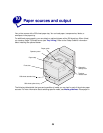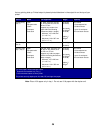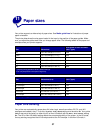
30
Halftone screens
The term halftone screen refers to the pattern of dots applied to an object on the page (text, graphics,
or images). If you look at a black and white photograph in a magazine, it appears to contain many
shades of gray. If you place the same picture under a magnifying glass, you see that it is actually
composed of a large number of small dots. These dots, also known as pels, may be of varying sizes or
varying tones. Without halftoning, it would not be possible to produce quality photographic images on a
page printer. This process of representing an image as a series of halftones is known as halftone
screening.
Attributes
Halftone screens have three main attributes: screen frequency, screen angle, and spot function. The
halftone screen is further divided into halftone cells. These cells contain the individual pel spaces. The
screen frequency and angle attributes determine both the number of halftone cells that make up a
halftone screen and the orientation of the cell.
The spot function determines which of the individual pels in the halftone cell is turned on to represent a
particular gray level or color tone. The following illustration shows a halftone screen and halftone cells
rotated 45 degrees.
Screen frequency
The screen frequency is the number of halftone cells per inch. A higher screen frequency setting
increases the number of halftone cells per inch. Increasing the number of halftone cells per inch does
not necessarily give you better quality. The reason for this is the higher settings may make the colors or
halftones seem to run together or bleed.
Different printing needs do require different screen frequency settings; for example, offset printing
requires a higher setting, whereas newsprint generally requires a lower setting. Your printer default is
set to give you the best screen frequency setting for high quality business graphics.
Screen angle
The default angle of the halftone screen and cells place the dots so they are the least noticeable to the
eye. It also ensures the alignment of color through all four color planes. By avoiding the placement of
halftone cells at an angle of 90 degrees, the viewer’s eyes are focused on the image and not on the
dots.
Frequency (cells
per inch)
Angle
Spot function



